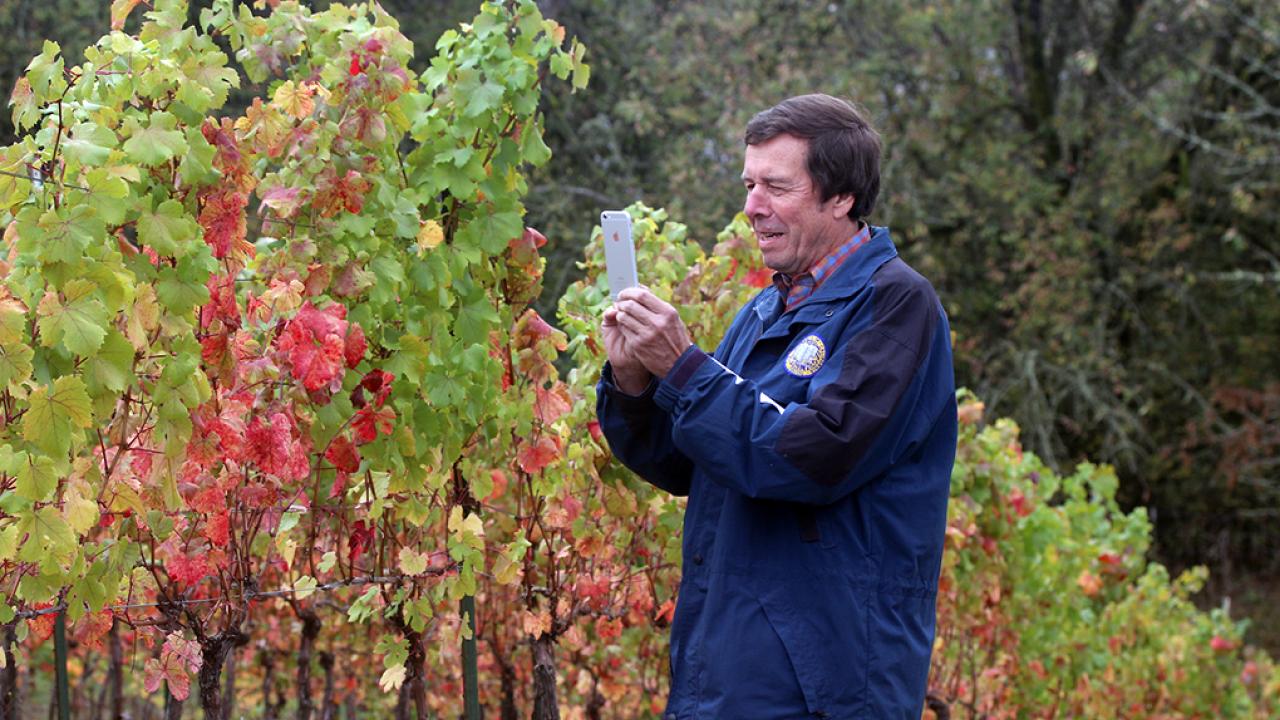
Frank Zalom: Lifetime IPM Achievement Award from the California Department of Pesticide Regulation
Virtual Ceremony Set Thursday, Feb. 29
Quick Summary
- Frank Zalom 'advances IPM practices in California specialty crops as a preeminent researcher, practitioner and champion of sustainable pest management.”
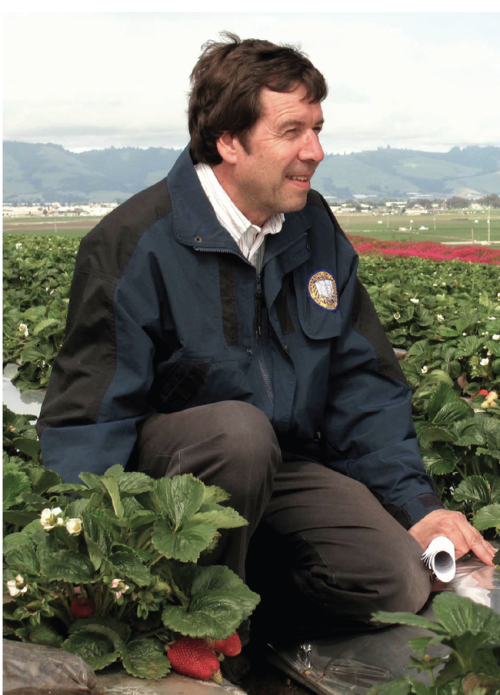
Update:
- Full Ceremony: https://youtu.be/XEMKD04bDT4
- Video honoring Frank Zalom: https://youtu.be/oXc8OcQivLI
- Remarks from Assemblymember Cecilia Aguiar-Curry: https://youtu.be/o4xnXyPn7e8
UC Davis distinguished professor emeritus Frank Zalom, an internationally recognized integrated pest management (IPM) specialist whose stellar career spans 45 years, is the newly announced recipient of a Lifetime IPM Achievement Award from the California Department of Pesticide Regulation (CDPR).
Zalom, a member of the UC Davis Department of Entomology and Nematology faculty, and formerly, the 16-year director of the UC Statewide IPM Program, will be honored at CDPR's IPM Achievement Awards virtual ceremony at 1:30 p.m., Thursday, Feb. 29. Four other individuals or organizations also will receive the 2023 awards. (Register here to access the Zoom ceremony.)
CDPR praised Zalom for “advancing IPM practices in California specialty crops as a preeminent researcher, practitioner and champion of sustainable pest management.”
The Lifetime IPM Achievement Award recognizes individuals with 20 or more years of research, professional practice, or outreach in IPM-related sectors.
“Dr. Zalom's work has contributed greatly to advancing safe, effective, and sustainable IPM practices in specialty crops such as almonds, strawberries, tomatoes, and olives,” a CDPR spokesman said. “Through hundreds of presentations and publications, Dr. Zalom has contributed to broad adoption of IPM practices for numerous agricultural pests, resulting in less insecticide use and reduced run-off impacts and high-risk pesticide exposures.”
Zalom officially retired in 2018 but continues his IPM research and outreach efforts as a recall professor in the Department of Entomology and Nematology. He also serves as advisor to the California Department of Food and Agriculture's (CDFA) Office of Pesticide Consultation and Analysis, and a science advisor for the U.S. Department of Agriculture's National Institute of Food and Agriculture.
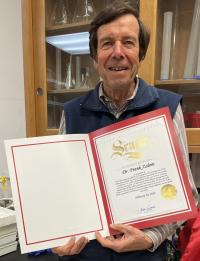
State Sen. Bill Dodd, 3rd District, issued a Senate proclamation heralding his “outstanding contributions” to the state of California: “Dr. Zalom's distinguished 40-plus year career as a leading researcher, practitioner, and advocate for integrated pest management has significantly propelled advancements in this crucial field. The state formally recognizes this remarkable accomplishment and extends gratitude to Dr. Zalom for his exceptional contributions to the welfare of both California and the global community.”
Zalom is known for his “tireless advocacy for IPM as THE way to address pest concerns in a sustainable, economical and environmentally acceptable manner.” His peers describe his approach to IPM as “progressive, not dogmatic, integrating the economical and judicious use of crop protection products while promoting effective, biologically based pest management alternatives.”
“The overarching objective of my research program can best be described as the pursuit of knowledge that advances the science and use of integrated pest management,” Zalom said. Although he initially worked on rice, cotton and alfalfa, he turned his primary focus to California specialty crops including tree crops (almonds, olives, prunes, peaches), small fruits (grapes, strawberries, caneberries), and fruiting vegetables (example, tomatoes).
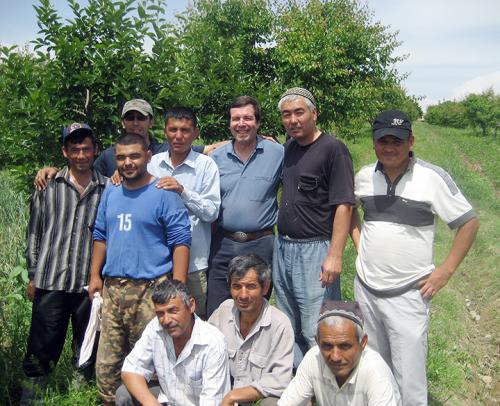
Zalom developed IPM strategies and tactics within the context of these systems that included monitoring procedures, thresholds, pest development and population models, biological controls, and use of less toxic pesticides, many of which are incorporated into UC IPM Guidelines for these crops (see https://ipm.ucanr.edu/agriculture/) and have become standard practice. He pursues his goals through a combination of fundamental studies linked to pest biology, physiology, and community ecology.
Overall, Zalom engages in what he calls "problem-focused, hypothesis-driven research that focuses on understanding the biology of the pest species that eventually results in economically viable IPM management approaches that reduce the amount of undesirable insecticides being used in crop production."
Zalom says he considers himself "a problem-solver who consults with fellow scientists, researchers, horticulturists, students, visiting scholars, extension educators, growers, pest control advisers, environmental groups, and public agencies--listening to their requests and concerns, before proposing and implementing the best IPM solutions to pest problems."
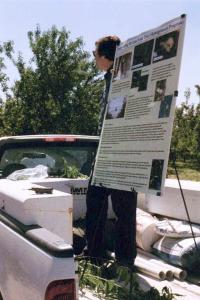
His career led to his presidency of the 7000-member Entomological Society of America (ESA) in 2014, and ESA's highest honor, Honorary Member, in 2021. His peers also elected him Fellow of the ESA, American Association for the Advancement of Science, Royal Entomological Society (London), and the California Academy of Sciences.
Zalom began his professional career in 1979 as an assistant professor at the University of Minnesota, where he taught “Economic Entomology” and “Insects in Relation to Plant Disease,” and conducted research on insect transmitted diseases of vegetable crops.
He joined the California State Legislature's newly funded UC IPM program in 1980, serving as the first Extension IPM coordinator for California, then associate director for research, and advancing in 1986 to program director. Zalom served as the UC IPM director until November of 2001, when he returned to full-time research, teaching and extension in IPM at UC Davis. He held an unusual three-way appointment: teaching, Agricultural Experiment Station and Cooperative Extension.
Zalom's leadership roles during the formative years of the UC IPM Program were innovative, playing a critical role in the development of its outreach efforts. Highlights included creating an interdisciplinary IPM core team of Cooperative Extension Farm Advisors at UC Kearney Agricultural Center; locating and hiring the original group of area IPM Advisors and proposing an administrative structure for them within UC Cooperative Extension; and providing support for the development of the UC IPM website, which is considered the worldwide “gold standard” of IPM information.
As the UC IPM director, Zalom addressed such high priority issues as development of nonchemical and reduced-risk insecticide alternatives involving pesticide runoff mitigation; and increased food safety and worker protection impacts. He assembled researchers from diverse disciplines “to pursue innovative ideas needed to address the pest challenges.”
Reducing dormant sprays in tree crops. Addressing pesticide runoff resulting from orchard dormant sprays required a systems approach; Zalom assembled and led an interdisciplinary group of UC researchers that included horticulturists, ecotoxicologists, hydrologists, and analytical chemists during the 1990s. They identified IPM alternatives and best management practices that became widely used in California tree fruit agriculture. “The research and outreach efforts conducted in collaboration with various stakeholders groups resulted in reduction of dormant sprays in almond orchards alone by more than 50 percent,” Zalom recalled. “A focus of this effort was reducing organophosphate applications that ultimately resulted in their runoff into the Sacramento River following winter rainfall events that conflicted with the federal Clean Water Act.”
“The use of organophosphate dormant sprays, specifically, was ultimately reduced by 90 percent across California orchard crops. Outcomes included bringing the Sacramento River back into compliance with the Clean Water Act while improving treatment thresholds and monitoring guidelines on which to base intervention for several orchard pests and providing reduced risk options for growers like using microbial insecticides or other in-season alternatives when needed. As a result, the almond industry progressed from an annual calendar insecticide spray used by most growers to alternative practices based on monitoring of target pest populations such as peach twig borer and San Jose scale, and implementation of alternative practices.”
Formation of an almond Pest Management Alliance. Zalom represented UC Davis on a team of UC and agricultural stakeholders that formed the Almond Pest Management Alliance. From 1998 to 2004, the alliance demonstrated and evaluated season-long reduced risk pest management practices against both insects and diseases across California. This effort resulted in the publication of a “Seasonal Guide for Environmentally Responsible Pest Management Practices in Almonds.” CDPR recognized members of the Almond Pest Management Alliance and the Almond Board of California with an IPM Innovator Award. The UC group received the ESA Team Award in 2008 for its efforts. “The key foundation for these awards was the effective research and extension programs that Frank led,” according to Robert Curtis, then-research director of the Almond Board of California.
Implementation of IPM management approaches for other crops led to documented reduction use of insecticides.
During his UC career, Zalom addressed and published research and Extension articles on arthropod pest management for many California crops, including rice, cotton and alfalfa in addition to “specialty” fruit and vegetable crops, for which he is best known. These include almonds, grapes, olives, strawberries, and tomatoes. California leads the nation in production of these crops, valued in excess of $14 billion.
Work on Almonds
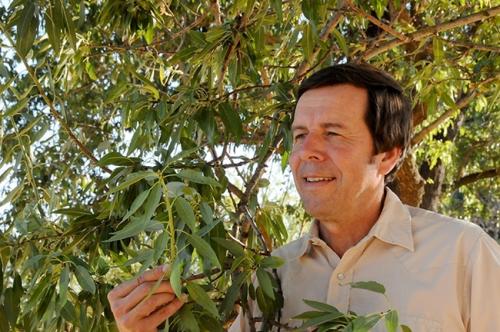
Zalom's collaborative research and extension efforts on almonds, the largest U.S. tree crop as measured by acreage and value, may be the best example of his academic IPM efforts.
Navel orangeworm in almonds: With UC Cooperative Extension (UCCE) Farm Advisors and the Almond Board of California, Zalom helped develop and then implement a pest management program targeting the navel orangeworm, a key pest of almonds. The program includes winter sanitation, early harvest, and development of a degree-day model (available on the UC IPM website and widely adopted since its development in the 1980s). As a result, navel orangeworm damage decreased from 8.8 percent in 1978 to less than 1.5 percent by 1990, while insecticide use dropped by more than 40 percent on an industrywide basis during that time. Zalom continues to work on insecticide resistance in navel orangeworm.
Spider mites in almonds: Zalom collaborated with former UC Berkeley professor Marjorie Hoy to develop and implement an integrated spider mite management program for almonds that included damage thresholds, presence-absence sampling, and preservation and augmentation of beneficials.
The Almond Board of California presented Zalom with an Outstanding Research Award at its 1997 annual research conference and a special lifetime appreciation recognition in 2018 upon his "official" retirement from UC Davis.
Work on Strawberries
Zalom is the primary UC entomologist working on strawberries, and his research spans three decades. He was instrumental in developing a comprehensive spider mite management program that encompasses such practices as nursery transplant chilling that reduces strawberry susceptibility to spider mites, sampling protocols, damage thresholds, integration of mite predators, and selective miticide and insecticide use. As a result of this integrated program, the industry went from having only one effective miticide due to loss of acaricide registrations used through the 1980s, to one, where more than 80 percent of California growers release predatory mites in the spring. Zalom is also known for developing a lygus management program that emphasizes prevention (specifically, eliminating non-crop hosts for lygus populations before they migrate into strawberries), and use of sampling and damage thresholds intended to reduce the numbers of sprays applied.
Zalom's expertise on strawberry pest is globally sought. He has posted 45 of his PowerPoint presentations on lygus, mites, whiteflies, thrips and other insects at http://ucanr.edu/sites/zalomlab/Strawberries/.
Zalom also worked with local UCCE Farm Advisors and the berry industry to develop biological information to respond to the introduction of two invasive insects: light brown apple moth (2007) and spotted wing drosophila (2008). In both cases, he wrote illustrated production guidelines that the California Strawberry Commission distributed to growers.
Work on Tomatoes and Parasitoids
Zalom was instrumental in developing an egg sampling plan and control guidelines for the key fruit-feeding pests: tomato fruitworm and beet armyworm. This easy-to-use plan took into consideration parasitization by endemic populations of the parasitic wasp Trichogramma. “The program became widely adopted in the 1990s and the concept continues to be used even as registered insecticides have changed since that time,” Zalom said. “As a result, the California processing industry has gone from annual ‘calendar' sprays for fruitworms and armyworms that were widely used in the early 1980s to very infrequent applications for these pests.”
Zalom was also part of the team that introduced an exotic parasitoid to control the invasive southern green stink bug, a pest that no longer poses a threat to Sacramento Valley tomato growers.
Work on Grape Pests
In the mid-1990s, Zalom served as the lead investigator of a USDA-Sustainable Agriculture Research and Extension (SARE) grant on using cover crops for insect and weed management.
More recently, Zalom represented UC Davis on the European Grape Vine Moth (EGVM) Team that recommended technical approaches to contain the invasive EGVM in northern California's winegrowing regions and suggestions for the regulatory agency approach to engage affected local communities in control efforts. “The approach emphasized the need for community engagement rather than the ‘top down' regulatory approach that had been used in a similar situation with the light brown apple moth in the Monterey Bay area,” Zalom pointed out. “Successful implementation of the technical aspects of the program led to the declaration of ‘eradication' of EGVM in California in 2015.
Currently, Zalom is working on red blotch disease, responsible for losses already estimated at “tens of millions of dollars in North Coast vineyards alone.” USDA-ARS virologist Mysore Sudarshana and Zalom identified the vector of the virus as a treehopper. The research gained worldwide attention, including a cover story in the journal Phytopathology.
Work on Invasive Pests
Following the 1998 discovery of olive fruit fly in California, Zalom identified sampling methods, determined its range and seasonal phenology in California, and characterized its larval development and cultivar susceptibility.
In addition to his research on key pests of various crops, Zalom and his lab have conducted IPM research for 17 invasive pests of specialty crops that became established in California. Among these are the southern green stink bug, silverleaf whitefly, glassy-winged sharpshooter, olive fruit fly, a new biotype of greenhouse whitefly, invasive saltcedar, light brown apple moth, spotted wing drosophila, European grape vine moth, brown marmorated stink bug, and bagrada bug.
Featured in The American Entomologist
The American Entomologist featured Zalom in a 2023 "legends of entomology" piece titled Blue Collar California. In 2017, he received the B.Y. Morrison Memorial Medal from the USDA Agricultural Research Service (ARS) and the American Society for Horticultural Science. He is the only entomologist ever to receive the honor.
Among his many other accomplishments:
- He served as editor-in-chief of ESA's Journal of Economic Entomology from 2018-2022.
- He has authored or co-authored 376 journal articles and book chapters. Google Scholar attributes more than 11,000 citations to his papers, and assigns a h-index score of 50 and an i-index score of 207 to these works. (The i-index reflects the number of his papers that have been cited at least 10 times in other research papers.)
- He has delivered more 900 presentations at various clientele meetings in California since 1980.
- He has published well over 400 outreach articles on practical IPM during his 43-year UC career.
- He served as editor-in-chief of ESA's Journal of Economic Entomology from 2018-2022. This 115-year-old publication is the "most cited" journal in entomology, and well over half of the papers originate from outside of the U.S.
- He has participated in various international leadership projects involving IPM.

Zalom, a UC Davis alumnus, received his doctorate in entomology in 1978, studying with major professor and agricultural entomologist Albert “Al” Grigarick. Zalom also holds two degrees from Arizona State University: a bachelor's degree in zoology (1973) and a master's degree in ecology (1974).
His UC Davis students have gone on to careers as professors, Cooperative Extension specialists and Farm Advisors, consultants, research directors and product development managers (including pheromones and agricultural chemicals). Many of his alumni have also received IPM awards for their work in development and implementation of IPM systems and practices.
Frank Zalom's legacy of instilling a passion for IPM continues through not only his students but his research and outreach efforts in the agricultural industry.
